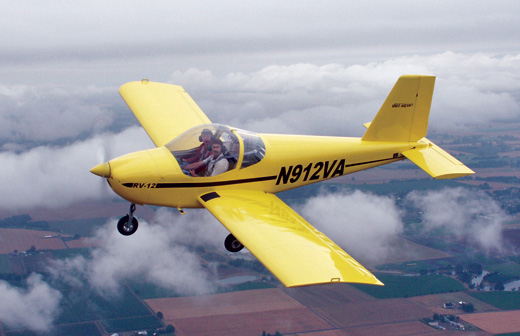
This proof-of-concept Van’s Aircraft RV-12 led to the kitbuilt ELSA version. Van’s is the only major company offering an ELSA kit.
In the 1966 movie Born Free, Elsa is a lion cub rescued and then set free in her natural habitat. To some extent, Experimental Light Sport Aircraft (ELSA) regulations have a similar aim: to provide aspiring pilots greater freedom of flight. The plan was to be a carefully administered, low-cost entry to general aviation that would help liberate both sport aircraft manufacturers and new pilots from the onerous, expensive requirements of the existing Federal Aviation Regulations (FARs).
The ELSA program, which went into effect in September 2004, is part of a package that supports a wide range of recreational flying. When all of the initial FAA paperwork was finished, the changes affected most segments of the FARs including aircraft design, testing, maintenance, ongoing support, pilot licensing, operations and medical. It was the largest change in the FARs since the FAA was founded.
Some Background
Earlier attempts at entry-level simplification had limited success. FAR 103 set the rules for legal, unlicensed ultralights (single seat, 254-pound empty weight maximum, 24-knot maximum stall speed and other regulations). A waiver eventually allowed dual instruction in approved two-seaters.
In the late 1980s and early ’90s, the FAA approved several manufactured primary category aircraft and a primary pilot’s license. But only one or two of the designs went into production and fewer than 200 people qualified for the primary license.
Meanwhile, many ultralights barely met the weight or other restrictions. Others didn’t but were flown anyway. For years the community unsuccessfully petitioned the FAA to loosen the requirements.
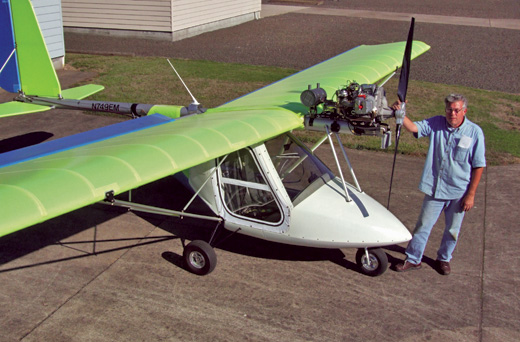
Ernie Moreno’s kitbuilt Flightstar II SC was licensed as an ELSA before the January 2008 deadline. The Flightstar was designed as an ultralight trainer—a category phased out by the Light Sport Aircraft program.
The FAA, however, did begin work on a new license to be called Sport Pilot. It would allow medical qualification with any state driver’s license and completion with as few as 20 flight hours (compared with 40 hours minimum for the Private license). Sport Pilots would be limited to flying a machine that qualified as a Light Sport Aircraft. Restrictions would include no night or IFR flying, no more than one passenger, no flying for business and flight no higher than 10,000 feet MSL (later changed to allow more clearance when flying over high mountains).
An initiative to define LSA and associated programs began in 2000. More than 100 people, representing manufacturers, organizations, the FAA and “users,” met at EAA headquarters in Oshkosh, Wisconsin, to begin what eventually became the LSA initiatives. I was there as a user/journalist. The century-old nonprofit standards organization, ASTM, described its no-fee potential administrative role, and we voted to accept ASTM’s guidance through a community consensus standards process mandated by Congress and the FAA. (ASTM makes its money selling the completed standards.) Rather than submitting all data for FAA approval, the consensus process requires manufacturers to self-certify that they have met all LSA requirements.
After several initial face-to-face meetings, people volunteered to serve on one or more specialized committees such as aircraft categories (airplane, glider, weight-shift, gyroplane, powered parachute, lighter than air) and “cross-cutting” (engines and parachute systems, for example). Most of the committee work was handled by email.
Each company and organization could have only one voting member on each subcommittee. I volunteered to be on the airplane and gyroplane subcommittees and had the same single vote on each as did the FAA, EAA and AOPA. A single negative vote—with rationale supporting it—stopped the acceptance process until the proposed standard was revised to meet the objection or the subcommittee chair deemed that the objection was without merit. Years were consumed before the matrix of approved standards was published. The process continues today as new related standards such as Light Sport Aircraft designs are considered.
Definitions of LSA categories naturally became a major issue. Airplane LSAs are defined as:
- Single engine
- Weigh 1320 or less gross for a landplane and 1430 pounds or less for an amphibian
- Flying level no faster than 120 knots indicated at full power
- Stall speed no faster than 45 knots in clean, flaps-retracted configuration
- No more than two seats
- No complex controls such as in-flight prop pitch control and retractable gear, though there are exceptions
An empty load that will accommodate full seats and a reasonable amount of fuel.
Most other aircraft categories must meet these basic criteria. One exception is that gliders may have retracting gear. Other exceptions will be noted shortly.
Sport Pilots and those with higher pilot licenses who are flying as Sport Pilots are allowed to fly any legal aircraft that meets the LSA definition. Many older FAA-certified, standard manufactured aircraft qualify as LSA, including the Piper J-3 Cub, Aeronca 7AC Champ, two models of Ercoupes, and several Taylorcraft and Luscombes. Even more Experimental/Amateur-Built aircraft (homebuilts) also qualify.
A large number of modern certified European aircraft qualify as Special Light Sport Aircraft (SLSA). Manufacturers of these designs, which meet the LSA definition, are qualified by the FAA to build ready-to-fly aircraft under SLSA rules. Examples are the Flight Design CT, Tecnam Sierra, Evektor Sportstar and Remos G-3 and GX. Four Australian Jabiru models have also qualified. Since 2004, some American companies have also built qualifying SLSAs. These include Cessna with its Skycatcher, CubCrafters, American Legend, Kitfox Aircraft, X-Air and American Champion. Special Light Sport Aircraft may be used for paid flight instruction and rental.
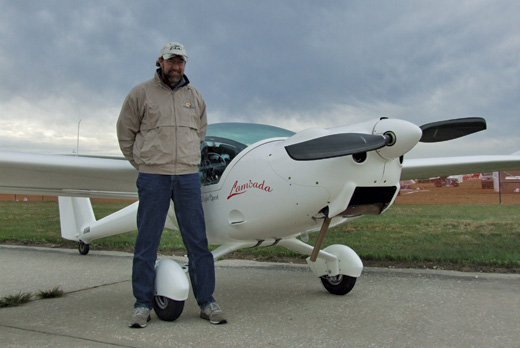
Jim Lee’s Lambada motorglider SLSA features a feathering prop for soaring. An FAA ruling (later rescinded) jeopardized a common-sense approach to the legal and practical solution to changing prop pitch. Lee’s new Phoenix motorglider benefits from the FAA’s correction.
Finally, We Tackle ELSA
The rationale for LSA qualification relies on FAA approval with standard or Experimental-category documentation or under the new SLSA rules for manufactured LSA. From the outset, though, a category called Experimental Light Sport Aircraft has caused confusion. Hindsight indicates that because thousands of Experimental/Amateur-Built (EAB) aircraft qualify as LSA under the definition, a different word should have been chosen for what are now lumped together as Experimental Light Sport Aircraft or ELSAs.
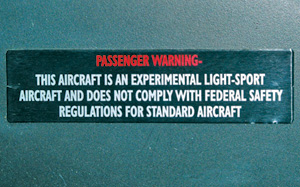
A placard for an Experimental Light Sport Aircraft.
For a long time, the FAA wanted to get rid of the two-place ultralight training exemption, and Sport Pilot/LSA was used as the opportunity to do it. The two-seat ultralight trainers were defined (350-pound empty weight and slightly higher flight and stall speeds and fuel capacity), but the aircraft were not inspected by the FAA. And ultralight instructors were approved by three private organizations, not the FAA.
The solution—at least on paper—to another vexing ultralight problem was also addressed by LSA rules. The FAA and everybody else knew that a significant percentage of the single-seat “ultralights” were, in fact, illegal because they were too heavy, flew too fast or both. For a time in the 1980s, the FAA showed up at some ultralight events with calibrated scales. But the problem was widespread, and the FAA had neither the time nor the budget to get serious about enforcement.
The ELSA rules were envisioned as the fix for these ultralight problems. Two-seat trainers and ultralight instructors without FAA certification were phased out. Up to a certain date, ultralight instructors were given credit for some of their experience and were invited to apply and take tests for a new category of Light Sport instructors. The two-seat trainers and the “fat” single-seaters could become legal as ELSAs after an inspection. The catch was that these two former ultralight aircraft types could then be flown only by pilots with at least a Sport Pilot license; ultralight-only pilots would not qualify.
The deadlines for completing these changes were postponed a few times, but the final date for having everything completed to convert “fat” single-seaters and two-seat ultralight trainers was January 31, 2008. Many licensed pilots with heavy, single-seat ultralights and two-seat trainers scrambled to meet the deadline. But ultralight pilots who felt no need for an FAA license continue to fly their single-seaters. Part 103—the ultralight regulation—continues in effect. Yet ultralight training remains questionable, as two-seat trainers and the ultralight instructor pool have gone away.
The FAA’s plan was for new ultralight pilots to train in light-wing-loading aircraft with Light Sport instructors. However, only one SLSA, the M-Squared Breese DS, looks and presumably flies like a two-seat ultralight. Maybe aspiring ultralight pilots will revert to the original training method, which was in single-seaters with directions provided by one-way radio guidance from the instructor on the ground. That’s how I checked out in ultralights and later instructed—until the two-seaters came along.
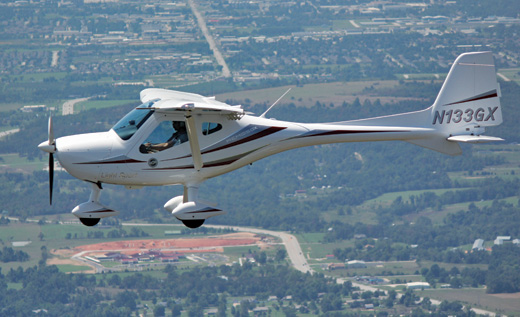
The Remos GX SLSA is being certified and sold worldwide.
ELSA Category No. 2
A second type of ELSA is entirely different. It is a kit or a completed aircraft that is identical to an FAA-approved, factory-built SLSA. The manufacturer may produce the “kit” ELSA to any level of completion. The decision is no doubt based on how much factory labor customers seem to want and are willing to pay for. A major difference between the SLSA and the ELSA versions is that the former may be rented and serve as a platform for paid flight instruction. The ELSA cannot be used for rental or paid instruction.
Few companies have taken advantage of this ELSA option. Van’s Aircraft, which has turned out Experimental/Amateur-Built kits for its RV line, designed its RV-12 as an eventual ELSA kit. To do that, it had to design and build a prototype that the FAA would approve as an SLSA, which could then be marketed as a ready-to-fly aircraft.
So far, however, Van’s has retained its single SLSA as a demonstrator and sold kits for the RV-12 ELSA. Several builders, including company founder Richard VanGrunsven, have opted to build their RV-12s as Experimental/Amateur-Built projects. But most of the 400+ kits sold are being licensed as ELSA RV-12s, and there may be a resale advantage to that. Original and subsequent ELSA owners can take an FAA-approved 16-hour inspection course that leads to a Repairman Certificate allowing the owner to do the annual condition inspection on his or her aircraft. The close equivalent for people who build EAB kits is that they can get the Repairman Certificate to do the inspection on the aircraft they have built. But unlike the ELSA owner, no subsequent owner can get the Repairman ticket. The new owner will have to hire an A&P mechanic to do the annual check.
Yet Another ELSA Type
A final dose of same name, different deal is the plan allowing the owner of an SLSA to “downgrade” to ELSA category. Why might an owner give up the extra value of commercial use represented in an SLSA for an ELSA certificate? One reason might be to avoid expensive mandatory changes or upgrades. Each SLSA factory decides what must be done to keep the aircraft airworthy. Another reason is it allows the owner to make changes not authorized by the factory for its SLSA during the building process. A third would be that by taking the 16-hour inspection course for the aircraft category (airplane, for example), the owner can get the Repairman Certificate and do his or her own annual inspection as with any other ELSA.
Researching this, I asked an LSA-savvy FAA employee whether the ELSA could be returned to SLSA status. Theoretically, the answer is yes unless the owner took advantage of Option 2 and changed something to make it different from the parent SLSA. In practice, he said, it’s unlikely that factory approval (which is required for the switch back) would be provided. In effect, the factory has lost control of what’s in the aircraft and how it is maintained when it is an ELSA.
Quirks
In a system as complicated as the Sport Pilot/LSA program, oversights or miscalculations are almost guaranteed. Flexibility in responding to and correcting unforeseen circumstances is one indicator of how well a complex system is managed.
Two mistakes caused and eventually fixed by the FAA illustrate the point. Neither was specifically about ELSA, but they show the potential for unintended consequences.
The first one involved a strange application of the LSA rule prohibiting retractable landing gear. From the beginning, an exemption was intended for amphibians, which must raise their gear to operate from the water. Someone in the FAA decided, however, that the landing gear could not be raised or lowered in the air. (Where would it be done? On jack stands?) The result would be that with the wheels down for a runway takeoff, they could not be raised for a water landing. And if starting with gear up in the water, switching to wheels down for a runway landing would be illegal.
The FAA administrator was asked to correct this glitch as soon as it became apparent, and she said she would. But nearly two years slipped by before the foul-up was fixed, considerably delaying the production and sale of legal amphibious LSA airplanes. I give the FAA a failing grade for lack of oversight that would have prevented the problem and a C- for its response.
Another glitch was caused by a thoughtless FAA interpretation of the waiver allowing motorgliders to change prop pitch from normal powered operation to prop-feathered gliding. By the time Jim Lee began importing the Phoenix motorglider, someone at the FAA had inserted the term autofeathering into the prop pitch waiver. As noted in my KITPLANES® (May 2011) article on last year’s Light Sport Expo at Sebring, Florida, the addition meant that feathering would automatically occur when the engine was turned off for soaring, and normal prop pitch would resume when the engine was started—if the system worked properly.
But without a method of unfeathering the prop for powered flight if the auto system failed, the result would be a forced landing. The Phoenix we flew had a mechanical override system that added weight, cost and complexity, but the FAA came to its senses relatively quickly and removed “auto” from the word, allowing subsequent motorgliders to feather and unfeather manually. My grades: D and B respectively.
I should add that in general, the FAA has been enthusiastic and positive in its attitude and responsive to the entire Sport Pilot/LSA initiative. Good people are managing the system.
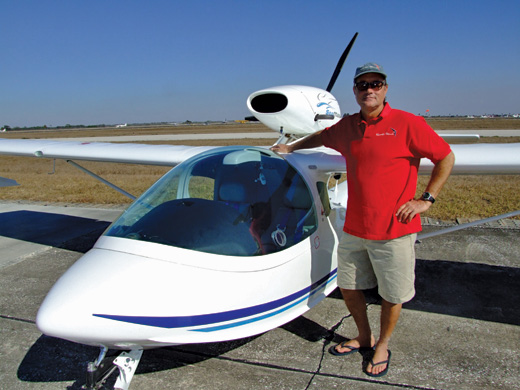
The FAA was slow to change its interpretation of retractable landing gear in amphibians such as this SeaMax.
An ELSA Flaw…Continued
I’ve already alluded to an FAA ruling that makes it legal for the builder of an ELSA to make changes. In the case of a kit such as the RV-12, any change that does not take the aircraft outside of the LSA definition may be made as soon as the pink airworthiness certificate is signed by the FAA’s inspector, usually a DAR. Mel Asberry, who writes the “Ask the DAR” column for this magazine, confirms the FAA’s point that this feature has been in the plan from the beginning. Its rationale is that ELSA come under the same rules as any other Experimental-category aircraft.
Some of us, myself included, missed this detail in our understanding of ELSA rules, and I found it to be a jaw-dropper. That’s because no other Experimental-category aircraft is like a factory-approved ELSA. If I had built my RV-12 as an EAB, I could have modified it however I desired during construction. But as an ELSA, mine was required to be built initially exactly like the SLSA prototype.
In addition to building, all testing was exactly as specified by Van’s Aircraft. On the first five flights, I flew as a production test pilot, not as an experimental test pilot as I would in a new EAB. Also, if I had built the RV-12 as an EAB, the builder block on the data plate could read “Martin RV-12.” Because my shop was a subset of the kit factory, my data plate lists Van’s Aircraft Company as the builder.
The result of this provision is that I could now change my airplane enough to cause it to operate quite differently—as long as it remains within the LSA definition. It’s almost as if Piper and Cessna owners were allowed to make any changes they wanted.
So this provision of ELSA remains, and it may explain the lack of ELSA kits competing with the Van’s RV-12. Why should a company take on the additional liability of a customer making changes that are neither authorized nor tested by the factory?



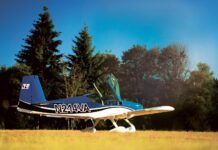

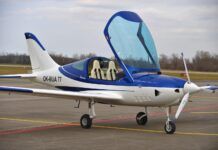


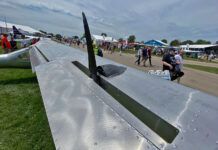
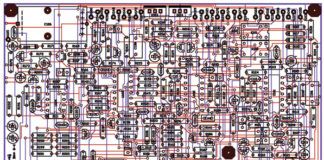
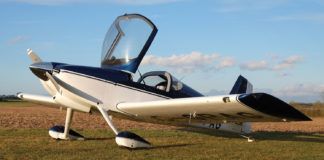

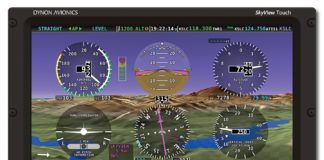
Can someone please answer a couple of questions for me? Why is it that military experience, especially the likes of phase docks and crew chief tearing apart our most high tech aircraft and putting them back together, along with doing OP’s checks, inspections and R&R is not considered hands on experience towards obtaining an AP license? Or at least qualify a person to inspect the likes of an ultralight? In my experience of trying to obtain proper AP licensing, I was told I could not obtain an AP license without hands on experience, while in the same breath was told I could not obtain hands on experience without an AP license. Seems like a catch 22 to me or am I wrong? How can you get one or the other if you cannot get one without the other? I would like to know why I wasted my time as an aircraft mechanic only to be told I had no chance to become one in civilian life if I didn’t shell out big money I could not possibly produce to relearn what I already could do in my sleep? Just seems counter productive to me, not to mention biased and prejudiced towards military members. You would think they might offer a test out option. This was in the early 80’s by the way. As a result my dream of maintaining and future flying of aircraft was lost forever due to bureaucratic BS. Was I fed a total line of BS by many supposedly reliable sources back then, or is that really the way it was?
It’s actually quite common for folks to get their FAA A&P certificates based on military experience, and the process is well documented in FAA publications. A quick internet search showed this page which has a lot of information:
https://www.airframeandpowerplant.com/mil.htm
You will still have to take written, oral and practical tests, but this shows how to use military experience to qualify to take the tests.
Can a private pilot fly an ELSA(Carbon Cub) with a drivers license as his medical license?